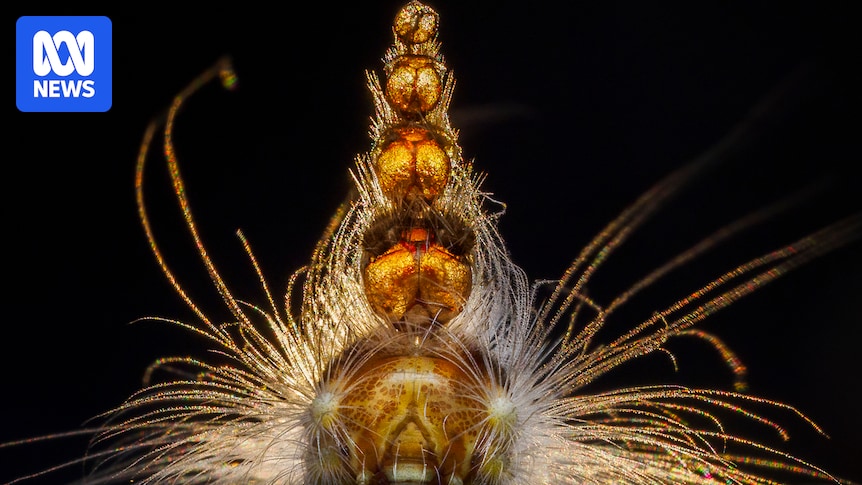An award-winning nature photographer living in country Western Australia has been named Wildlife Photographer of the Year for a second time after snapping an amazing photo in her own backyard.
Georgina Steytler is a wildlife photographer from Albany, 420 kilometres south of Perth on WA’s south coast.
The region is an environmental hotspot and commonly frequented by photographers hoping to capture unique images of killer and southern right whales, among other natural wonders.
Georgina Steytler has won the international wildlife photography award two times. (Supplied)
However, earlier this month in London, Ms Steytler was named Wildlife Photographer of the Year in the invertebrate category for her stunning photo of a gum leaf skeletoniser, a poisonous caterpillar that wears its old head like a crown.
“I’ve been looking for this caterpillar for a while after I saw it in a book and it is nuts, it’s absolutely nuts,” she said.
Ms Steytler said she had been on the lookout for the elusive bug for some time and just happened to chance across one while out for a walk.
“I was walking the dog … and what I do is when I see funny markings on a gum leaf, I turn them over … I couldn’t believe I finally found them,” she said.
Ms Steytler said the caterpillar, known as the “mad hatter” gets its unique look from shedding old husks but keeping them attached to the body.
“This caterpillar, it’s a leaf skeletoniser, and he keeps his old heads on his head like a shrunken head totem pole.
“You see him and then he’s got a smaller one and then he’s got another previously shed head, smaller on top of that, and then another one on top of that, and then a fifth on top.”
The invertebrates are common in the South West of the state, but often go unseen.
However, Ms Steytler said they were easy enough to find.
“They are right across southern Australia, so they’re not uncommon, but we don’t see them, probably because they’re on the underside of the leaf and they’re actually quite small,” she said.
A bird rising out of the darkness to grab a twig. (Supplied: Georgina Steytler)
“But rest assured, if people keep their eyes out, they are around us, they’re everywhere, so these caterpillars with shrunken heads are in your backyard.”
Ms Steytler said the reason for the caterpillar’s shrunken head totem pole-like structure was to keep the invertebrate from being eaten.
“It’s a predator deterrent,” she said.
“They’ve done studies and they’ve found that the ones with these heads actually last seven times longer.”
Georgina Steytler’s 2024 image of Dawson’s burrowing bees in a mating ball was highly commended. (Supplied: Georgina Steytler)
No stranger to winning
In 2018 Ms Steytler won the Invertebrates Behaviour category with her image of mud-daubers rolling balls of mud.
Last year, she received one of four highly commended awards in the Invertebrates’ Behaviour category, with her image of several Dawson’s burrowing bees in a mating ball.
Ms Steytler, who has photographed wildlife from all over the world, said the image highlighted just how unique her local environment was.
“What’s so exciting, people think they have to go all over the world to get amazing images and these kinds of images, but you don’t,” she said.
“This was right in my backyard in Albany, backing onto Torndirrup.”
A black kite hawk looking for prey escaping a bushfire in the Northern Territory. (Supplied: Georgina Steytler)
